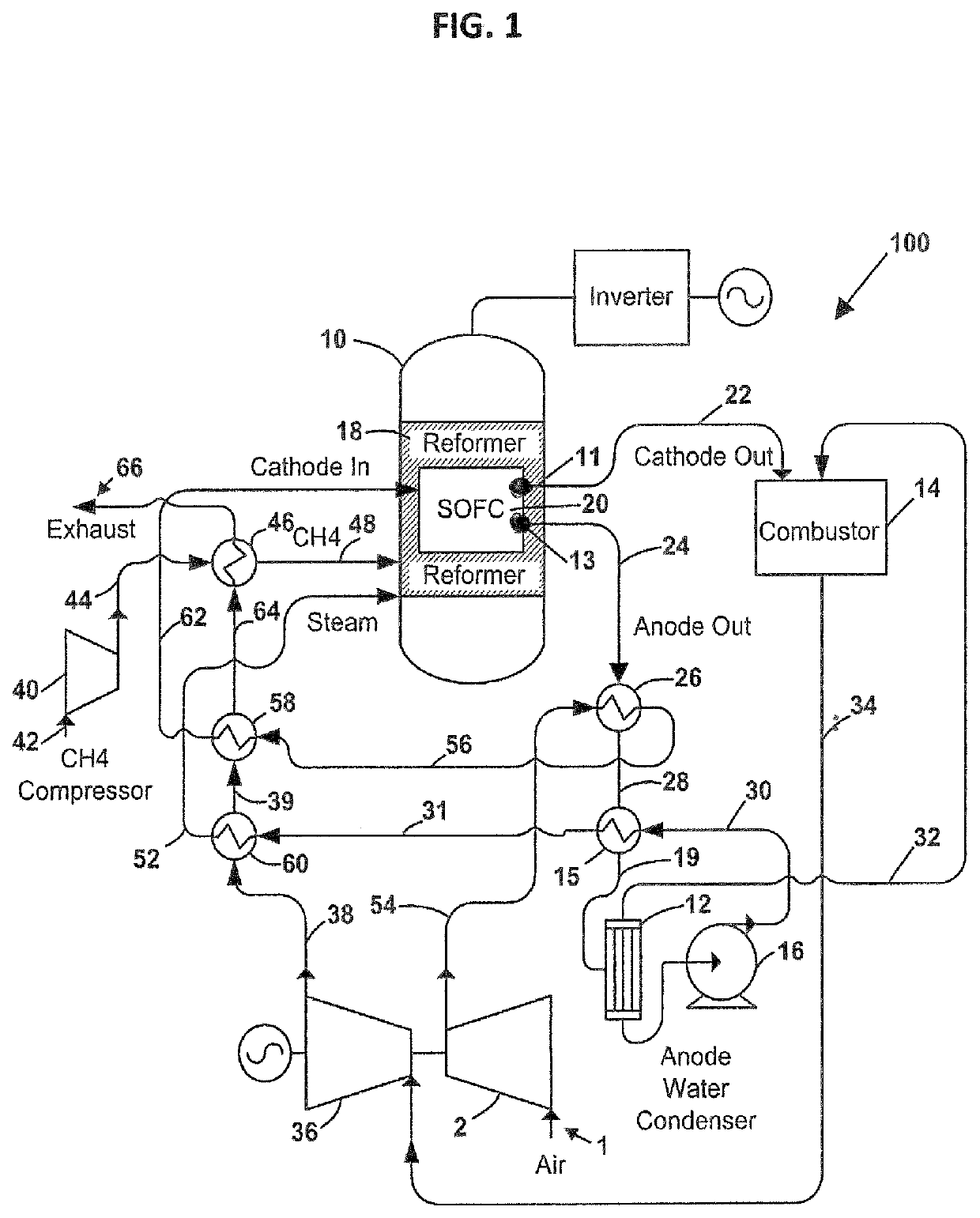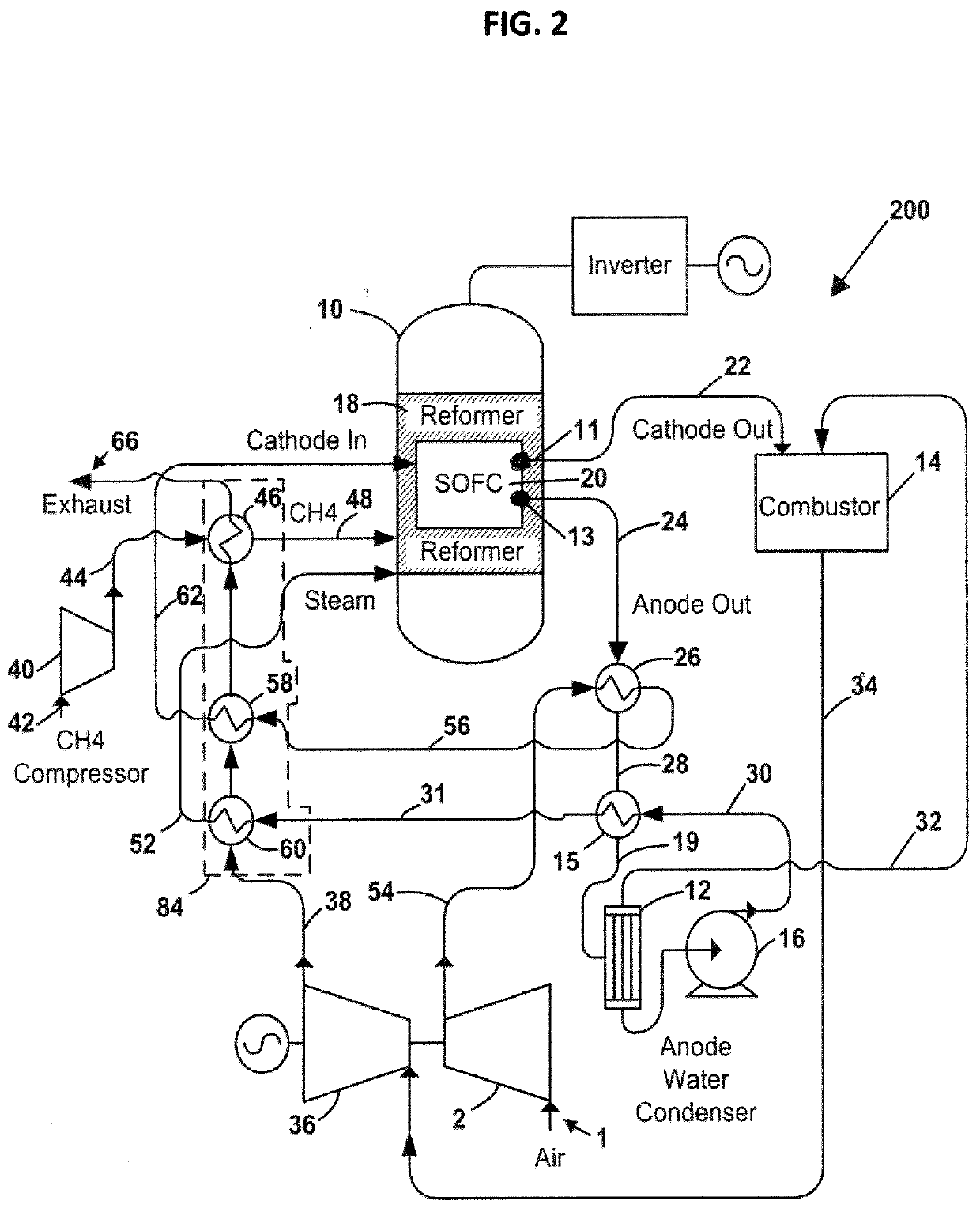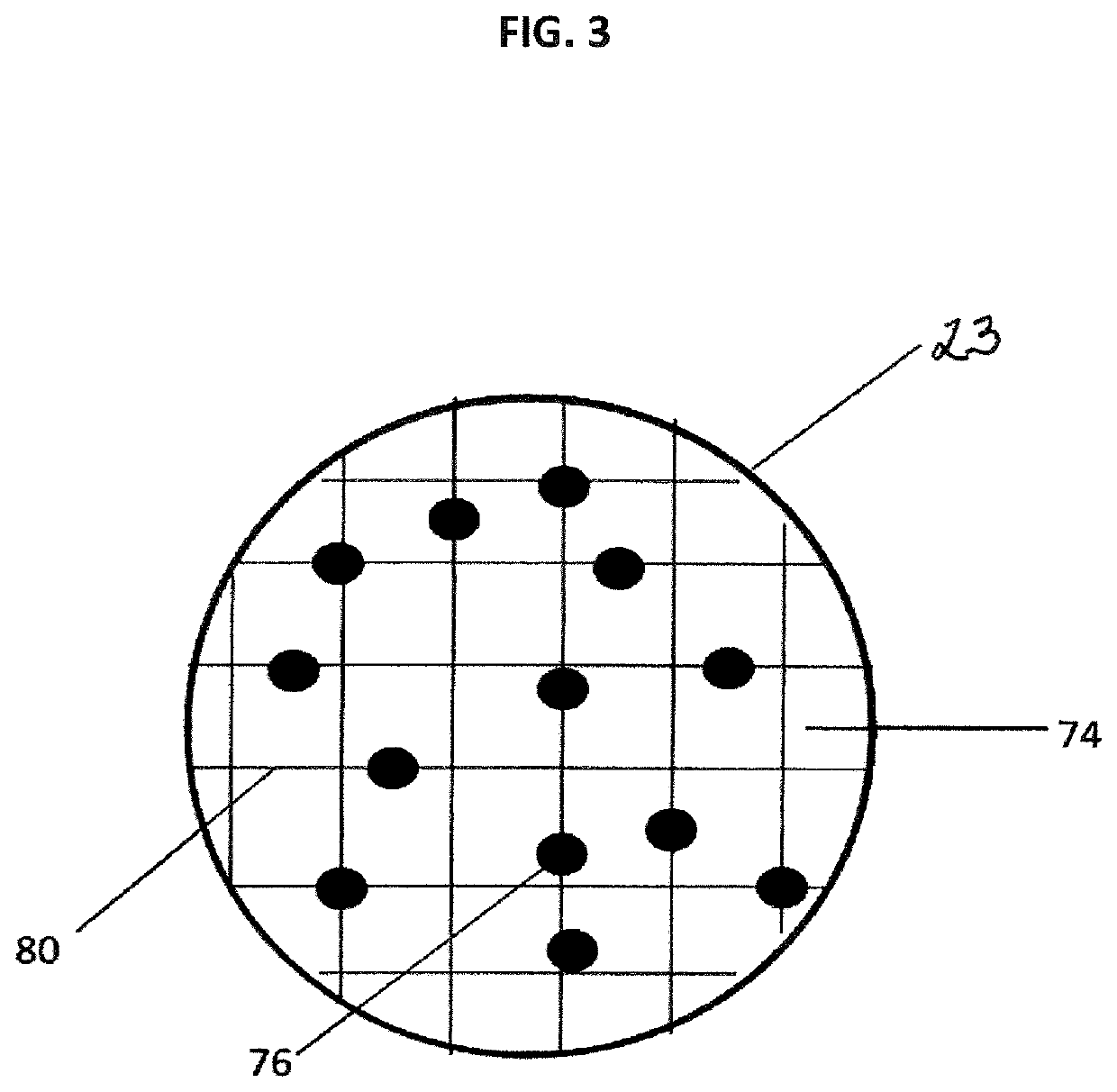Integrated power generation system
a power generation system and integrated technology, applied in the direction of electrochemical generators, electrical apparatus, fuel cells, etc., can solve the problems of catastrophic damage ingestion of combustion products into the sofc stack at higher operating temperatures, the stack design of conventional metal interconnects tends to material degradation at these higher operating temperatures, and the average pressure of elevated pressure of conventional sofc stacks, etc., to achieve improved overall electric efficiency, reduce waste heat loss to the environment, and improve fuel energy density
- Summary
- Abstract
- Description
- Claims
- Application Information
AI Technical Summary
Benefits of technology
Problems solved by technology
Method used
Image
Examples
embodiment 100
[0043]With reference to FIG. 1, a schematic is depicted of an embodiment 100 of the thermally integrated power generation system of this invention. As seen in FIG. 1, a hotbox 10 houses a steam reformer 18 and at least one SOFC stack 20. The spatial and thermal relationships of the steam reformer 18 to the at least one SOFC stack 20 are not illustrated in FIG. 1. Any conventional arrangement of these components is acceptable as known in the art. A hydrocarbon fuel inlet line 42 fluidly connects to a fuel compressor 40, from which compressed hydrocarbon fuel line 44 exits. The compressed hydrocarbon fuel line 44 passes into a reformer fuel preheat exchanger 46 from which hot compressed fuel line 48 exits and fluidly connects to the steam reformer 18. A steam inlet line 52 also connects to the steam reformer 18. A reformate output line (not shown) connects the steam reformer 18 with the anode (fuel electrode) side 13 of the SOFC stack 20.
[0044]Further to FIG. 1, air (oxidant) line 1 i...
embodiment 200
[0049]FIG. 2 depicts another embodiment 200 of the thermally integrated power generation system of this invention, which is similar in all respects to the embodiment depicted in FIG. 1 with one exception. In FIG. 2, the heater 60, the cathode air preheat exchanger 58, and the reformer fuel heat exchanger 46 are all combined into a multi-line heat exchanger 84 encircled by dotted lines in FIG. 2. As such, the expanded combustion product line 38 passes into the hot side of the multi-line heat exchanger 84; while each of the water / steam line 31, the cathode air line 56, and the reformer fuel line 44 passes individually through the cool side of the multi-line heat exchanger 84.
[0050]Functionally, as implied from FIG. 2, thermal energy in the combustion products flowing in expanded combustion product line 38 converts water flowing directly from line 30 (or water and / or steam flowing in line 31) into steam, which steam is fed through steam line 52 to the reformer 18. Likewise, thermal ene...
PUM
| Property | Measurement | Unit |
|---|---|---|
| channel length | aaaaa | aaaaa |
| temperature | aaaaa | aaaaa |
| length | aaaaa | aaaaa |
Abstract
Description
Claims
Application Information
 Login to View More
Login to View More - R&D
- Intellectual Property
- Life Sciences
- Materials
- Tech Scout
- Unparalleled Data Quality
- Higher Quality Content
- 60% Fewer Hallucinations
Browse by: Latest US Patents, China's latest patents, Technical Efficacy Thesaurus, Application Domain, Technology Topic, Popular Technical Reports.
© 2025 PatSnap. All rights reserved.Legal|Privacy policy|Modern Slavery Act Transparency Statement|Sitemap|About US| Contact US: help@patsnap.com



